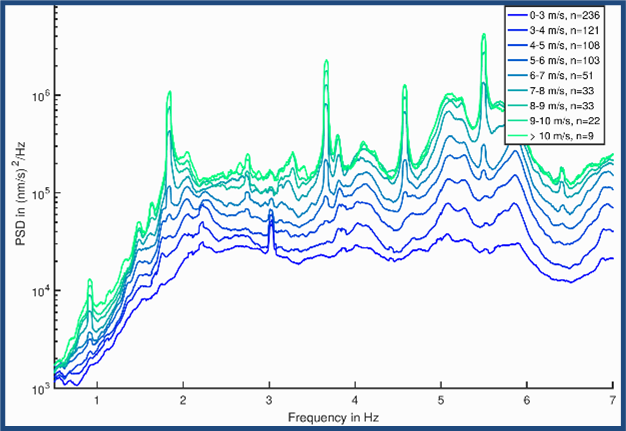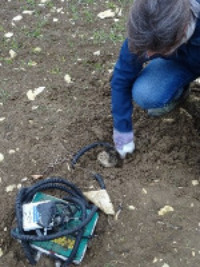Technical mechanical processes and large structural installations transmit vibrations into the ground. These vibrations can be detected kilometres away with sensitive seismological measuring stations. We have investigated such ground motions at a tunnel boring machine, seismic vibrators and wind turbines.

Fig. 1: Power density spectrum of ground motions near a wind turbine (WT). The intensity of the ground motions increases with the wind speed (different colours), as the intensity of the vibrations of the WT increases. There are characteristic amplitude peaks of the vibration frequencies that can be assigned to the WT structure and rotation frequency.

Fig. 2: Burying a seismometer near a WT, the cable is linked to the data acquisition and the batteries (green).
In physically simplified terms, wind turbines (WT) are large mechanical oscillators that excite ground motions. These movements propagate as elastic waves in the ground and they are physically equivalent to earthquake waves or seismic waves. The emitted waves are clearly identified as they have characteristic frequencies corresponding to the natural frequencies of the WT or the (triple) rotation frequency of the rotor. These vibration emissions contribute to the seismic background noise. They are generally not perceptible by humans, but they can interfere with highly sensitive measurements.
Joachim Ritter is a member of WindForS and heads the working group "Evaluation of seismological signals from wind turbines". Publications on vibrations can be found on his personal page.
| Projects | Related links |
|---|---|
| TremAc | |
| WINSENT | external project page |
| Inter-Wind | external project page |
| Forecasting tool | Report |

